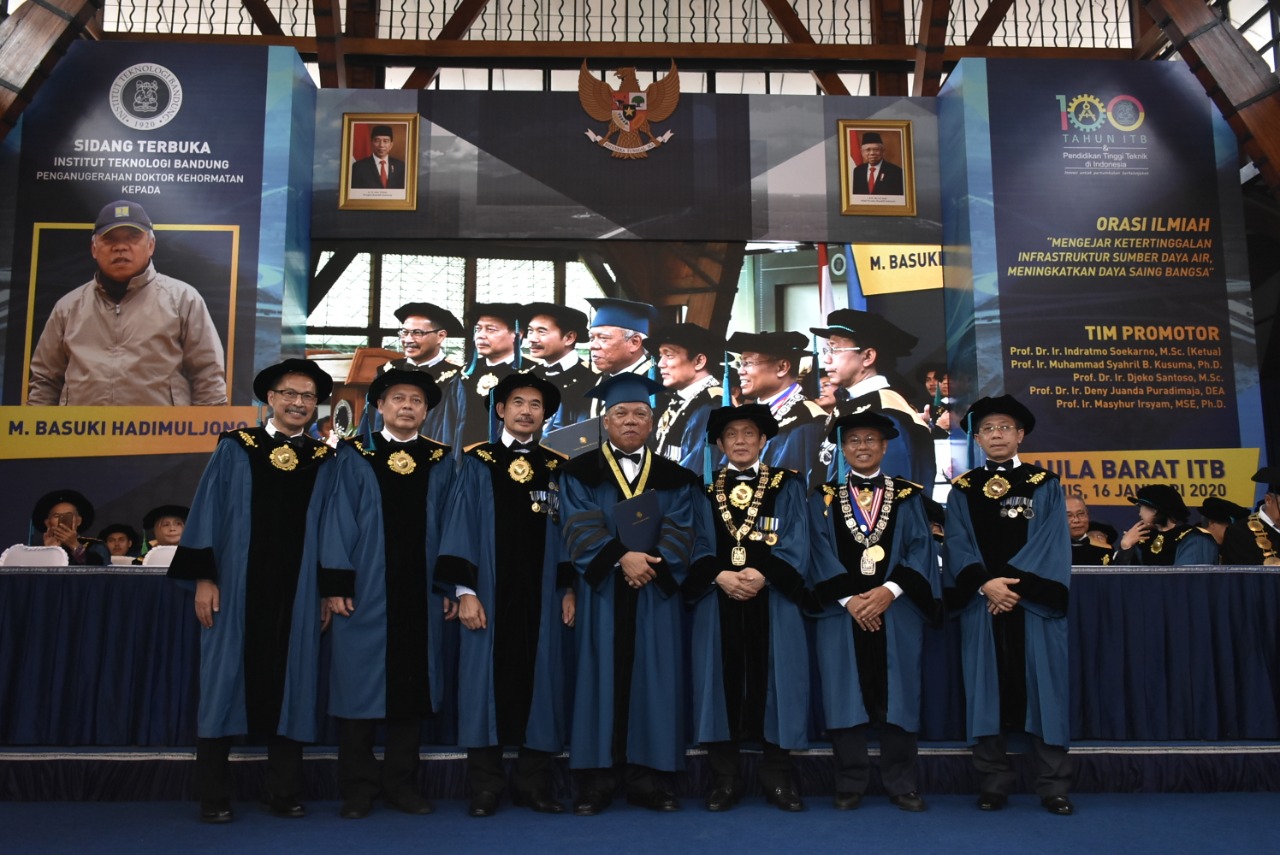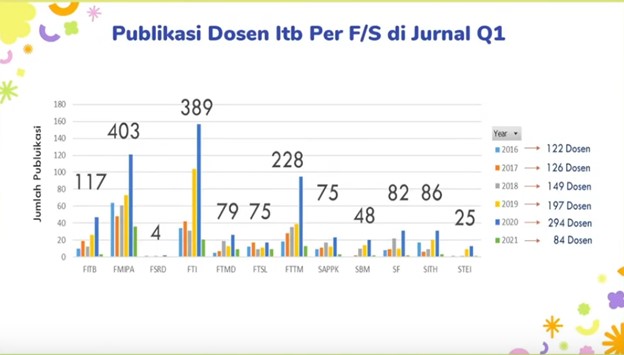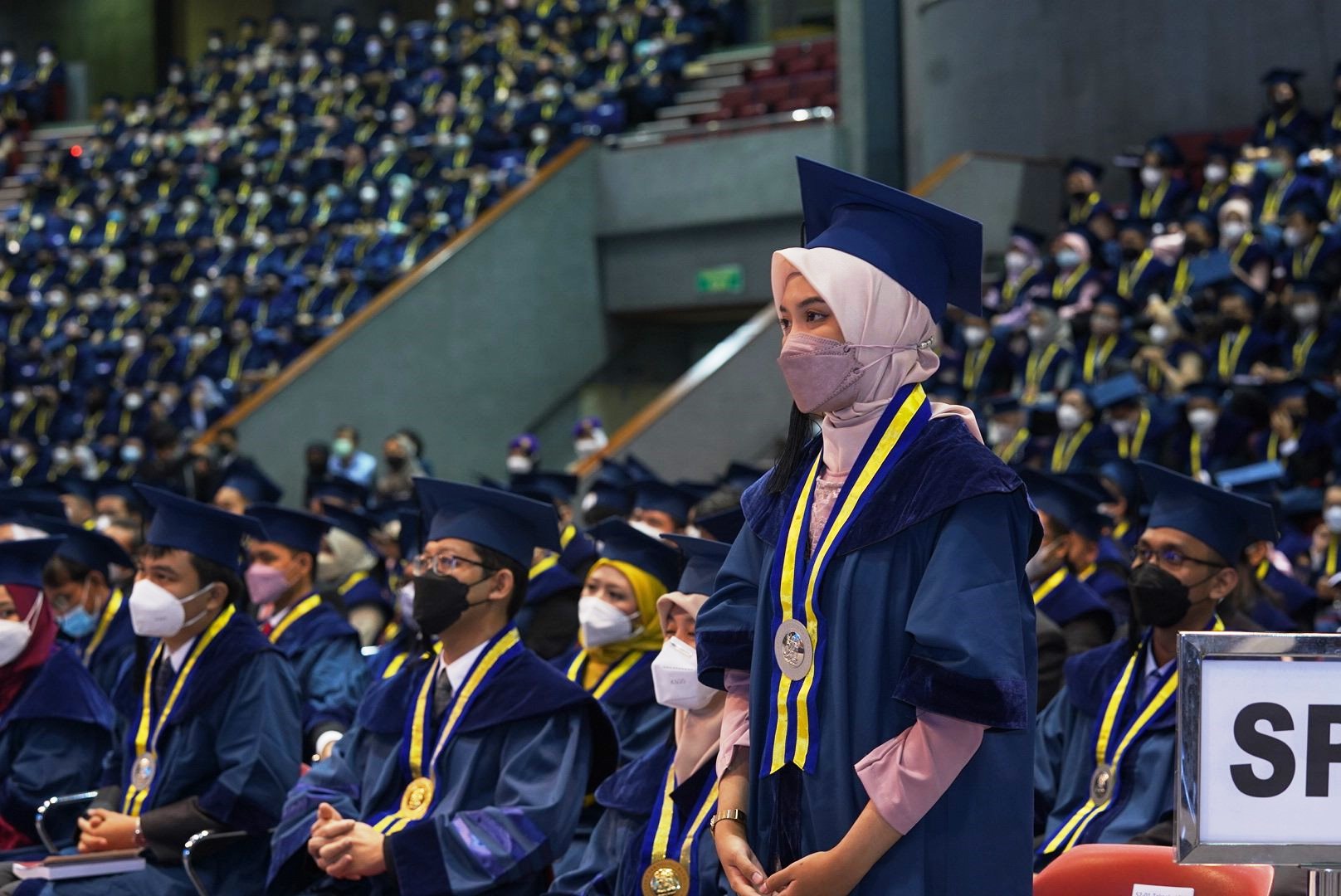Digital Twin: Connecting the Real World and Virtual World
By Adi Permana
Editor Adi Permana

BANDUNG, itb.ac.id - The Information Technology Research Group (KKTI) of ITB started April by presenting a public lecture on Thursday (01/04/2021) about the meaning and role of a digital twin in various sectors of life. This public lecture was delivered by one of the ITB KKTI lecturers, Fetty Fitriyanti Lubis, S.T., M.T., with Prof. Dr. Ir. Suhono Harso Supangkat, M.Eng., as the moderator. This lecture was conducted online through the Zoom platform for around 60 minutes.
Fetty started her presentation by explaining the history of the digital twin. Digital twin was first introduced by Dr. Michael Grieves in 2002. Grieves "moved" objects from the real world in the form of data to areas of the virtual world. The data were processed to be useful information. Then the information was reimplemented in the real world. The history also defined the digital twin at once.
To provide further insight, Fetty also explained the evolution of the digital twin according to Microsoft. In the early stages of the digital twin, a representation was done to map real-world and virtual world items to data. Then in the second phase, the real-world representation was modelled through design technology. The next development was integrating physical data and virtual data so that the monitoring and forecasting could be done. The final stage involved the experience component, such as a simulation toward the user to see the effect.
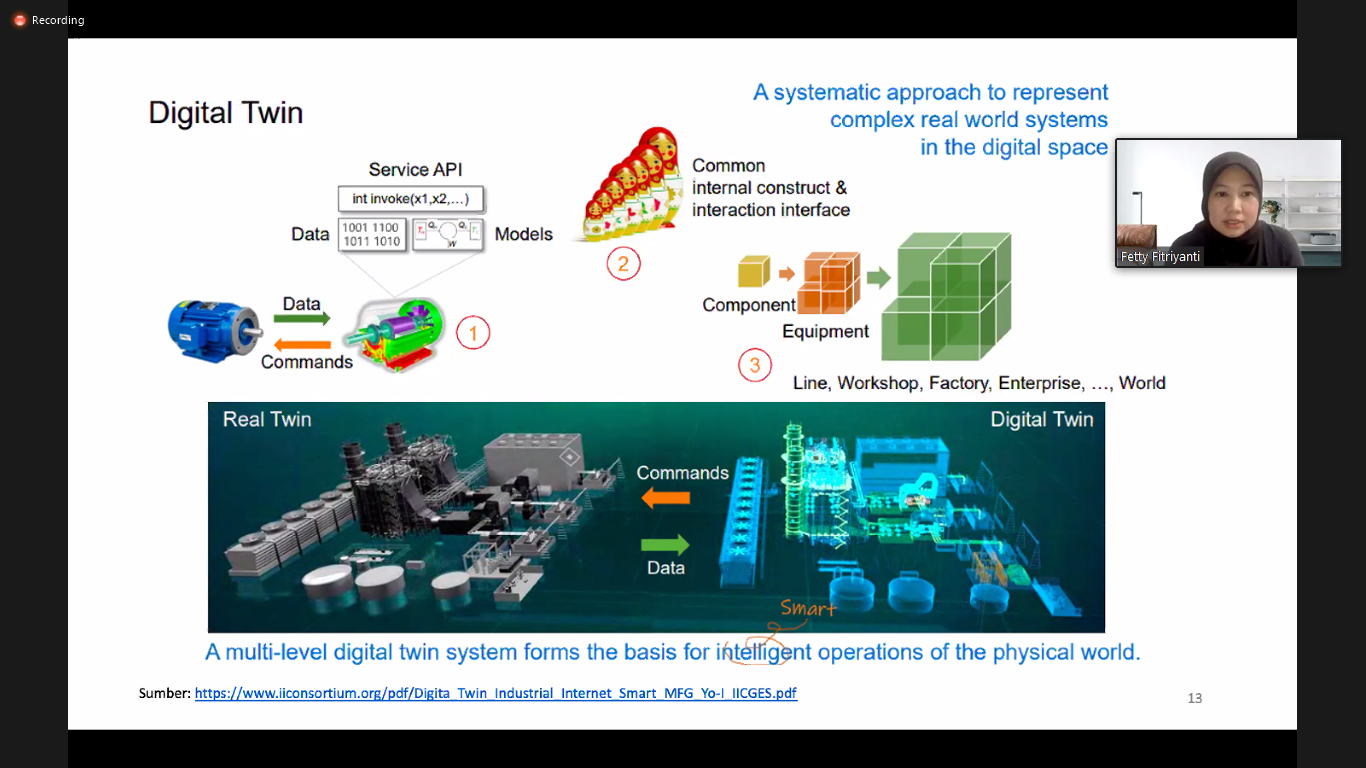
In the opinion of Fetty, the unique data in the digital twin could be used for controlling, monitoring, analyzing, and simulating. These things were important to do before implementing an idea into the real world. The data needed in designing a digital twin was field data, such as design, production, and business. On the other hand, the models built were physical models, services models, visualization models, and augmented reality (AR) models. As a result, the products produced by digital twin could be descriptive, indicative, predictive, prescriptive, and AR.
She explained that data were the key elements of the digital twin. There were three types of data as the key elements: past or historical data, current data, and future data. For current data, data were not only about equipment sensors but also external sources, such as business units. Current data could be a part that integrates several business departments. Future data could be data of machine learning prediction results or data of engineers' design for simulation.
The digital twin had been applied to several sectors, such as manufacturing, automotive, health, retail, and smart cities. In the manufacturing sector, some of the digital twin's goals were to produce high-quality products and test new designs digitally. On the other hand, the health sector utilized digital twins to virtualize hospital systems and identify medical errors. The point was a digital twin could be applied in any sector. A digital twin could be very useful for examination, simulation, and visualization.
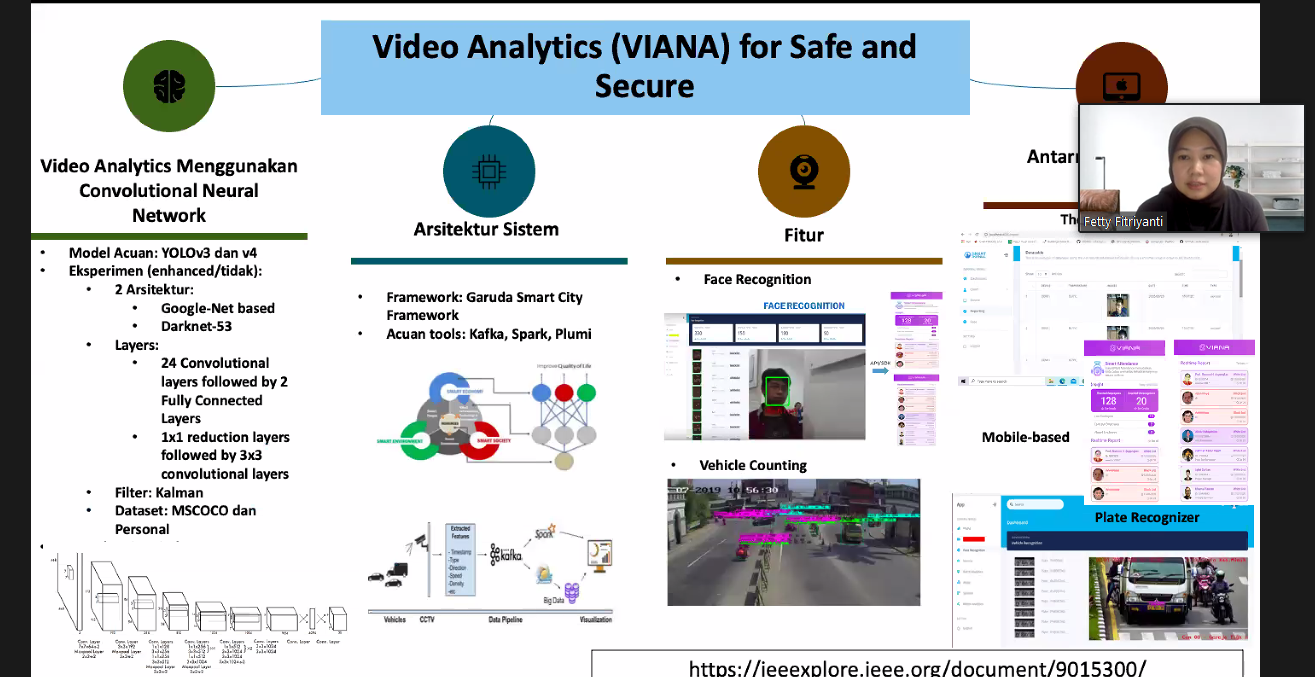
Fetty herself had contributed to the implementation of the digital twin. Together with KKTI and the Center for Smart City and Community Innovation (PIKKC) of ITB, Fetty conducted digital twin research initiatives. Some of them were BISMA, VIANA, and PdM. BISMA was a power consumption prediction system and daily power consumption monitoring. VIANA (Video Analytics for Safe and Secure) was an IoT multimedia system for monitoring hydroponic plants. Predictive Maintenance (PdM) was a maintenance system for railroads using machine learning technology.
Apart from all the benefits, digital twin also had weaknesses for us to face as challenges. "The challenges are found in implementing the digital twin, such as software sustainability, data security, limited human resources, also high need of hardware and computing capabilities," she concluded.
Reporter: Maria Khelli (TPB STEI, 2020)
Translator: Zahra Annisa Fitri (Perencanaan Wilayah dan Kota, 2019)

.jpg)
.jpg)
.png)
.jpg)
.jpg)
